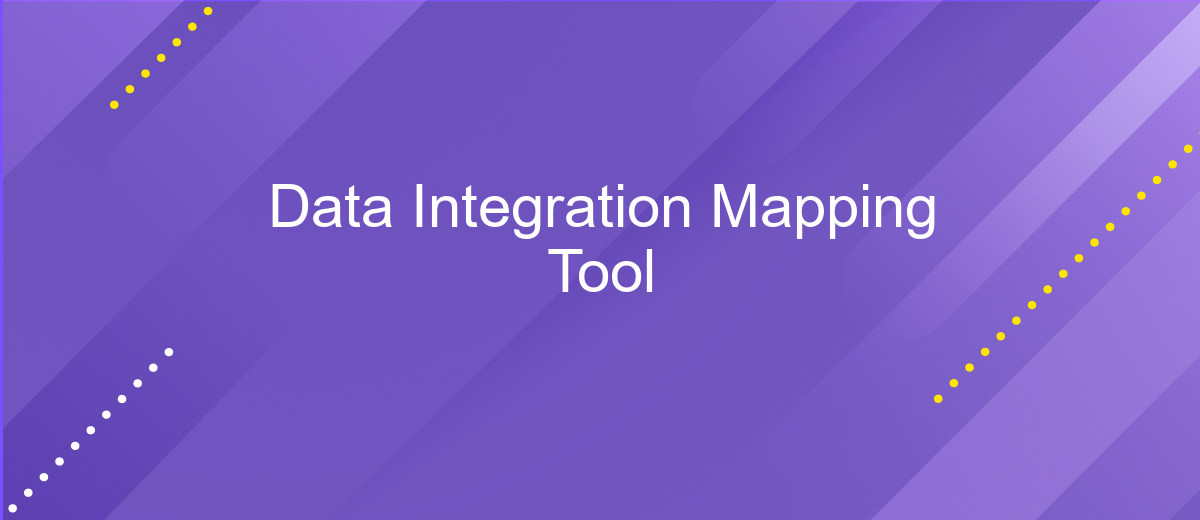Data Integration Mapping Tool
In today's data-driven world, businesses rely heavily on seamless data integration to make informed decisions. A Data Integration Mapping Tool plays a crucial role in this process by enabling organizations to efficiently map, transform, and unify disparate data sources. This tool not only streamlines data workflows but also enhances data accuracy and accessibility, empowering businesses to harness the full potential of their data assets.
Introduction to Data Integration Mapping Tools
Data integration mapping tools are essential in modern data management, enabling organizations to seamlessly combine data from various sources into a cohesive and unified view. These tools facilitate the transformation, cleansing, and consolidation of data, ensuring that disparate datasets can work together effectively. By automating complex data mapping processes, they reduce manual effort and errors, allowing businesses to focus on deriving actionable insights from their data.
- Streamlined data transformation and mapping processes
- Improved data quality and consistency
- Enhanced collaboration between IT and business teams
- Scalability to handle growing data volumes
- Support for various data formats and sources
In today's data-driven world, the ability to integrate and map data efficiently is crucial for gaining a competitive edge. Data integration mapping tools not only streamline operations but also empower organizations to make informed decisions based on comprehensive data analysis. As data sources continue to proliferate, these tools will play an increasingly vital role in ensuring that businesses can harness the full potential of their data assets.
Key Features and Benefits

Data Integration Mapping Tool offers a comprehensive suite of features designed to streamline and enhance data integration processes. With its intuitive interface, users can effortlessly map and transform data across multiple sources, ensuring seamless data flow and consistency. The tool supports a wide range of data formats and systems, making it versatile for various integration needs. Advanced error handling and validation mechanisms ensure data accuracy and reliability, reducing the risk of integration failures. Additionally, the tool's automation capabilities save time by eliminating repetitive tasks, allowing teams to focus on more strategic initiatives.
One of the key benefits is its compatibility with services like ApiX-Drive, which simplifies the setup of complex integrations. ApiX-Drive offers a user-friendly platform that connects different applications without the need for extensive coding knowledge. This integration capability enhances the tool's functionality, making it ideal for businesses seeking efficient and cost-effective data management solutions. Overall, the Data Integration Mapping Tool not only improves operational efficiency but also empowers organizations to make data-driven decisions with ease.
Types of Data Integration Mapping Tools

Data integration mapping tools are essential for efficiently combining data from various sources into a cohesive and usable format. These tools offer different functionalities to cater to diverse integration needs, ranging from simple data transfers to complex transformations. Understanding the types of data integration mapping tools can help organizations choose the right solution for their specific requirements.
- ETL Tools: Extract, Transform, Load (ETL) tools are designed to pull data from different sources, transform it into a suitable format, and load it into a data warehouse or other systems.
- Data Virtualization Tools: These tools provide a unified view of data from disparate sources without physical data movement, allowing for real-time access and analysis.
- Data Replication Tools: These tools focus on copying and maintaining data consistency across multiple databases or systems, ensuring data availability and reliability.
- API Integration Tools: These facilitate data exchange between applications through APIs, enabling seamless communication and integration across platforms.
Choosing the right data integration mapping tool depends on factors like data volume, complexity, and specific business needs. Organizations should evaluate each type's capabilities and limitations to ensure they select a tool that best aligns with their data strategy and goals.
Choosing the Right Data Integration Mapping Tool

When selecting a data integration mapping tool, it's crucial to consider various factors that align with your organization's specific needs and goals. The right tool can streamline data processes, ensuring seamless integration across diverse systems. Begin by evaluating the complexity of your data sources and the volume of data you need to manage. This assessment will guide you in choosing a tool that can handle your data efficiently.
Next, consider the tool's compatibility with your existing systems and technologies. A tool that integrates well with your current infrastructure will minimize disruptions and reduce implementation time. Additionally, assess the tool's scalability to ensure it can grow with your organization's expanding data needs.
- Ease of use and user-friendly interface
- Robust security features
- Comprehensive support and documentation
- Cost-effectiveness and pricing model
Finally, involve key stakeholders in the decision-making process to ensure the chosen tool meets the needs of all departments. By carefully considering these factors, you can select a data integration mapping tool that enhances efficiency and drives your business forward.
- Automate the work of an online store or landing
- Empower through integration
- Don't spend money on programmers and integrators
- Save time by automating routine tasks
Best Practices and Future Trends
Effective data integration mapping is crucial for businesses seeking streamlined operations and insightful analytics. Best practices include maintaining a robust data governance framework, which ensures data quality and consistency across platforms. Utilizing automation tools like ApiX-Drive can significantly enhance efficiency by simplifying the integration process and reducing manual errors. Regularly updating and validating data mappings is also essential to adapt to evolving business needs and technological advancements.
Looking ahead, the future of data integration mapping is poised to be shaped by advancements in artificial intelligence and machine learning. These technologies promise to offer predictive analytics capabilities, enabling more proactive data management. Additionally, the increasing adoption of cloud-based solutions will necessitate more sophisticated integration tools to handle diverse data sources. As organizations continue to prioritize data-driven strategies, embracing these trends will be key to maintaining a competitive edge in the digital landscape.
FAQ
What is a Data Integration Mapping Tool?
How does a Data Integration Mapping Tool work?
What are the benefits of using a Data Integration Mapping Tool?
Can a Data Integration Mapping Tool be used without technical expertise?
How can I implement automated data integrations with a Data Integration Mapping Tool?
Time is the most valuable resource for business today. Almost half of it is wasted on routine tasks. Your employees are constantly forced to perform monotonous tasks that are difficult to classify as important and specialized. You can leave everything as it is by hiring additional employees, or you can automate most of the business processes using the ApiX-Drive online connector to get rid of unnecessary time and money expenses once and for all. The choice is yours!


